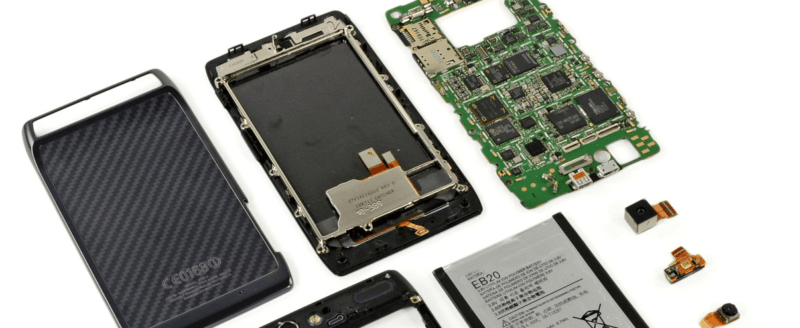Read about the different security risks posed by modern smartphones, and how it’s possible for custom-made devices to minimize those security risks.
Continue readingConsiderations When Starting a Custom Android Development
There are many factors to consider when starting a custom Android development project. Find out what those factors are and how they can help you.
Continue reading6 Vital Areas to Consider When Sourcing Android Tablets and Smartphones
Trying to source products in China? Learn what to look for! Read our guide on sourcing Android tablets and smartphones to avoid bad experiences and financial loss.
Continue readingHardware Manufacturing: 3 Important Issues to Consider for Your Startup
Considering to get into hardware manufacturing? Here are 3 Important Points for Your Startup to Consider.
Continue readingCasing: Smartphone vs Tablet

Case Manufacturing
One key element of a smartphone or tablet is the outer casing. The casing holds all the hardware together and its design is one of the fundamental USP’s (unique selling points) of the product. Design separates good products from great ones so spending sufficient time defining the design of the casing is important before stepping into manufacturing.
This manufacturing and development process will be different depending on the device you are designing for, be that a smartphone or a tablet. When you compare how casing molds are manufactured in these different product categories you will see some major differences. This is surprising considering how blurred the line is now between the smartphoneand thetablet. Daniel Weisbeck CMO and COO of Netbiscuits comments here about the merging of these markets.
Tablet Casing
In the tablet space the Design House (A PCBA fabricator and designer) creates PCBA designs in conjunction with the Casing Factories and other design firms who design cases. The Casing Factories will design and manufacture the cases to match the PCBA designs or will work directly with the Design House when they require entirely custom PCBA’s for a client with a specific need. These will then become privately owned molds by the client or integration company. The Casing Factories will also create various public molds based on the Design House’s PCBA designs. This allows Integration Company’s to select cases from a library of public molds to save time and money when working on new projects. The factory and the client control production.
Smartphone Casing
In the smartphone market the Design House make standard PCBA layouts for smartphones that are stable and reliable. A smartphone PCBA has a lot more complexity over a basic tablet so a Design House won’t spend the time to make variations of a smartphone PCBA unless the order volume is very high. After these PCBA layouts are fabricated they are given to the Integration Company who will then design private molds to suit. It is not common for Casing Factories to create public molds for these smartphone PCBA designs, like with tablets. So the integration company controls the production and ownership of the casing mold.
It is important to realize that even though the smartphone and the tablet maybe very similar products today, they have grown from two different markets. This is why we have these differences in manufacturing. The tablet grew out of the MP3 Player market. Factories making MP3 players slowly began to produce tablets as the MP3 market died. The smartphone industry grew from the feature phone market.
Smartphone Manufacturing: The 4 Essential Steps

Step 1: Integrated Circuit
The linchpin within any cell phone or smart device supply chain is the Integrated Circuit or IC company.
IC companies develop and manufacture the processors, SoCs (System on a Chip) and chipsets which run the devices and are the brains of the machine.
IC companies are able to dictate what happens within this industry by when and what sort of chips they produce. This is where you will begin when you first look to develop a Smartphone.
A couple times a year each IC company will release new processor chips and SoCs, which are compact chipsets designed for smart devices.
An SoC is made up of a processor core, the graphics chipset, the RAM and possibly ROM as well. SoCs are designed to save space and improve performance by grouping all the critical components on a device in one small area.
With the release of a new SoC, you will see better performance and altered configurations which will drive down the cost of the previous models or offer a higher performance model with new features; this evolution drives the high-end Smartphone market.
There are only a handful of IC companies in the world who develop for Smartphones, so when considering what chipset you want there are only a small number of questions that need to be asked, mainly price vs. performance.
Step 2: PCBA
After a new Processor chip or SoC has been released, the IC company will subsequently release PCBA reference designs so engineering companies can use them to design PCBA layouts.
The engineering company will produce a selection of PCBA layouts which are tested and proven stable to offer to their clients.
This foresightedness saves time and money and allows other key manufacturers in the next stages of the supply chain to use these standardized PCBAs to further reduce time and cost with preplanned designs.
Once you have selected an IC company and chipset you have the option to work on designing a custom PCBA or to choose a predesigned board; this will all depend on a variety of factors but the reality is there is a valid reason why most companies choose to use predesigned boards to save the time.
Step 3: Manufacturing
Integration Company
At this stage the integration company begins to get involved. This key player will be working with the client from the initial concept design up until the end of the production process managing all aspects of the sourcing, development and assembly of the phone.
It is paramount that you work with a well-managed integration company to assist with your project. Their efficient management of the supply chain allows for the lowest possible prices and the fastest production times.
Casing Design
Once a PCBA has been designed, integration companies will get involved to develop cases to fit their specific dimensions. The benefit of working with a standardized PCBA becomes apparent since integration companies can offer predesigned cases for the standardized PCBAs.
Even if the aesthetic design of your case is slightly different, the interior structure can remain the same so you can save on development cost and save time on the overall production.
Hardware Development
While the casing is being produced the integration company continue to work on the development of the remainder of the hardware.
This can become complex and timely as there are still many remaining components to be integrated into the phone with some needing further development.
These including: speaker, mic, ear piece, vibration motor, antenna, touch panel, screen, packaging, accessories, and battery.
Supply Chain Management
All the remaining components for the phone will have separate suppliers and factories and warrant strong relationships to take advantage of the best pricing.
The integration companies experience allows them to build long term relationships with suppliers and exploit this time and time again with ever new client.
The integration companies are able to coordinate all these suppliers and deliver the components to the assembly factories to begin the production.
Step 4: Assembly
Once all of the individual components have reached the assembly factory it is then down to the them to start producing the phone at the most efficient rate possible.
This will all be overlooked by the client through the eyes of the integration company who manage an issue that arises with assembly.
The assembly factory break down there process into two main stages, the trial production where they test their efficiency and the compatibility of all the components and finally to mass production where they start to produce the phone in large bulk quantities ready to be shipped to its final destination.




